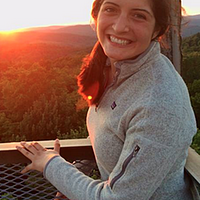On college campuses, students stunned by 'demon' description of Michael Brown
Loading...
When Darren Wilson, the white police officer who shot and killed Michael Brown, a black teenager, spoke of the moments just before the shooting, he described a David-vs.-Goliath battle – with himself as the little guy.
“When I grabbed him, the only way I can describe it is I felt like a five-year-old holding onto Hulk Hogan … that’s just how big he felt and how small I felt just from grasping his arm.”
St. Louis County Prosecutor Robert McCulloch released Officer Wilson’s grand jury testimony to the public last night after Mr. McCulloch announced Wilson would not be indicted.
The officer’s characterization of the size difference between himself and Mr. Brown – Brown was reportedly about one inch and 80 pounds larger than Wilson – has sparked outrage across the country. Some, like John Marshall of TalkingPointsMemo.com, point to the phrase as showing the “almost infantilized way” Wilson refers to himself. In calling Brown a “demon,” Mr. Marshall notes, Wilson dehumanizes the teenager.
After last night’s decision, many Twitter users have posted their response under hashtags such as #blacklivesmatter. And some campus rallies have echoed the sentiment.
From Los Angeles to the District of Columbia, student protests have largely stood against the grand jury decision. And some individuals are pushing back against Wilson’s description of the events surrounding Michael Brown's death.
When Lamar Richardson, a senior at Columbia University, read Wilson’s testimony, he says that he felt disgust and disbelief.
“To dehumanize him, to equate him to a demon — it reflects the large-scale notion of the state of black people in America,” Mr. Richardson says in a phone interview.
Richardson, who studies psychology and sociology at Columbia, says Wilson’s statement read like “a fabricated web of lies."
“What 18-year-old boy would see someone in uniform and completely disregard that and taunt him?” he asks. “For that to be taken seriously by a legal system — come on. If I were to be shot and killed, what would they say about me? Would my death be warranted?”
Ezra Klein at Vox reported both discrepancies and consistencies between Wilson’s testimony and the facts of the case.
“There are inconsistencies in Wilson's story. He estimates that Brown ran 20-30 feet away from the car and then charged another 10 feet back towards Wilson. But we know Brown died 150 feet away from the car.
There are also consistencies. St Louis prosecutor Robert McCulloch said that Brown's DNA was found inside Wilson's car, suggesting there was a physical altercation inside the vehicle.”
Last night, Richardson says about 200 people held a two-hour rally in the middle of the Columbia University campus — chanting, sharing their stories. He says he recalls similar campus events each year, including one honoring Trayvon Martin.
But this time around, he says, the injustice feels different.
“I literally have never felt like this before,” he says. “Today it’s just a new low.”
About 100 people held a vigil near the University of North Carolina at Chapel Hill’s campus on Monday evening. And today, students wearing all black left class at noon to converge at the Pit, a courtyard by the student union.
Aaron Epps, a first-year student at UNC, says in a phone interview Tuesday that some 200 students walked out of class. While he says that students have not dissected Wilson’s testimony, at the vigil Monday evening, students spoke about what it meant to be a black student at UNC and in America.
“The decision just made me feel like I was next,” he says.
Mr. Epps was with his a cappella group, Harmonyx, when the grand jury decision was announced in St. Louis Monday night. The group is a subgroup of the university’s Black Student Movement.
“When the decision came out, it was just like, a complete halt,” he says. “Everything just stopped. We were just sitting there.”





